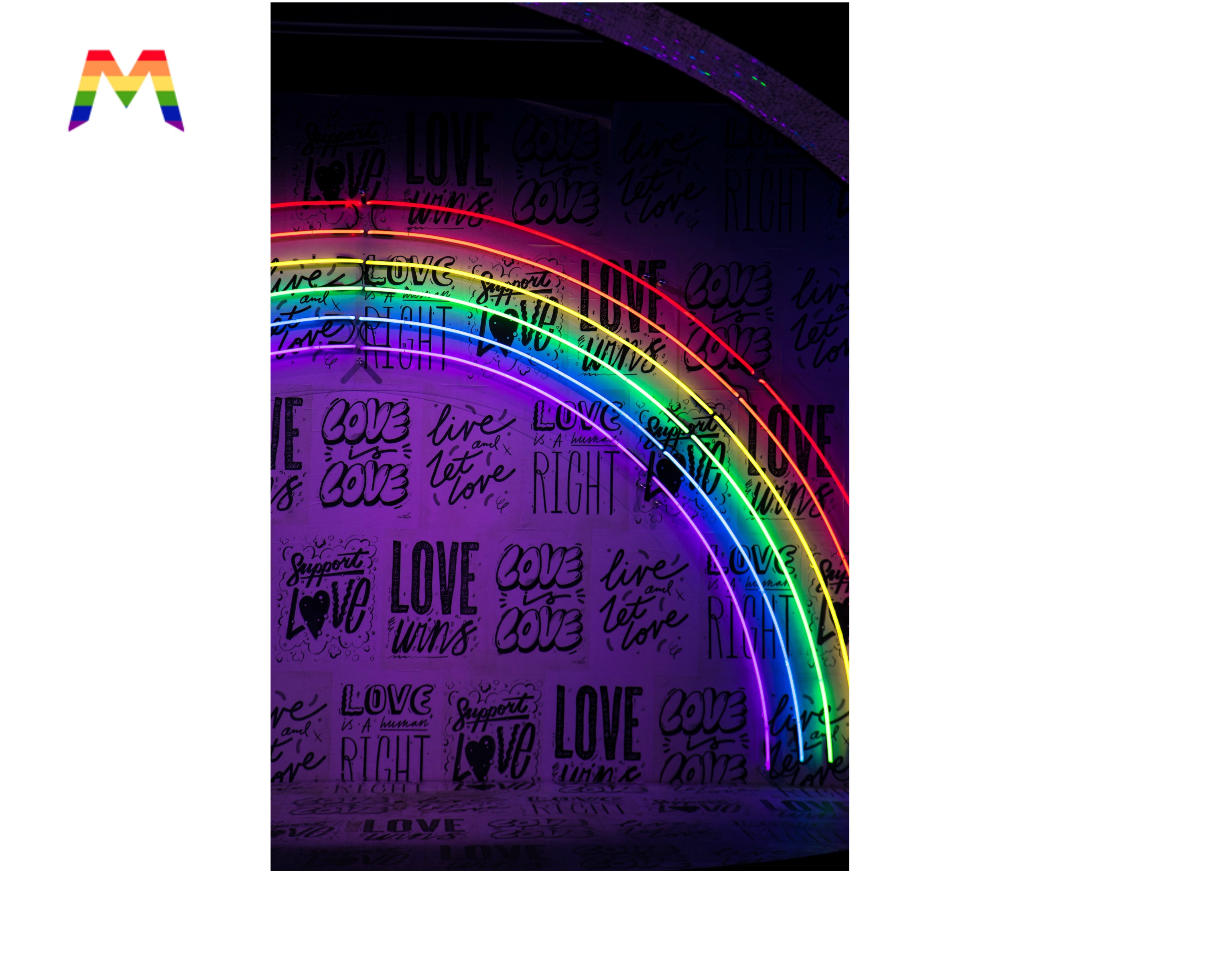Pride Month: Brand-Building in the Age of Inclusion

Fifty years ago, the Stonewall riots ignited a tumultuous journey towards achieving equality for the world's LGBTQ+ community. We are still on that journey and although much work remains to be done, there have been some significant milestones we can all be inspired by. During June's Pride Month, the symbolic support for the community is ubiquitous. Companies have jumped on the bandwagon with a prismatic show of rainbow-branded and love-themed products, storefronts and experiences. Brands strive to be culturally relevant and showcase a deeper purpose than just making money -- and what better way than aligning with a cause that the coveted Millennial segment deeply cares about and showcase it vibrantly across every fabric of daily life -- from mouthwash to socks.
From the Edelman Earned Brand report, we know 64% of consumers buy brands that stand for a cause they believe in -- however, we also know that they are very savvy at detecting insincerity. In addition to considering the impact of discerning consumers, the movement represents the voice and energy of a highly affluent demographic, with the purchasing power of the LGBTQ+ sector valued at $1 trillion in the U.S. and $3 trillion globally. Brands have a vested interest in getting this right -- from both an authentic "care" and "commercialize" perspective. This care-commercialize dynamic needs to be carefully managed -- too much care with weak metrics and your Chief Marketing Officer will reject your recommendations as being high on sentimentality and low on business accountability. Blatant marketing exploitation, on the other hand, with no substantive evidence that the brand genuinely supports LGBTQ+ rights, will be called out by the social media "purpose police."
So, how do brands navigate the choices in messaging, tone and format as they strategically launch their campaigns? We have identified three best practices that influence the success and authenticity of a Pride campaign.
Stories Work Better than Rainbow Tokenism
Many brands have organically brought Pride to life through their products -- from Nike's BETRUE Collection to MAC's kaleidoscope of #MACLOVESPRIDE palettes. However, many other brands continue to struggle to showcase substance over superficiality. Substance means the company consistently supports LGBTQ+ rights, not only in their marketing efforts but also in their employee relations, supply chain, customer relations and through their community activism. A great example of a company that is showcasing this authentic support through storytelling is Verizon. Their "Love Calls Back" digital campaign, featuring real stories of people coming out to their relatives, serves as a poignant reminder of the intense emotional journey that often exemplifies the LGBTQ+ experience.
In a moving spot, created by McCann New York and directed by Lee Hirsch -- who was behind the award-winning documentary Bully -- previously estranged relatives reconnect over the phone with a touching reminder: "It's never too late for love to call back." The campaign was done in partnership with PFLAG, an organization that reunites families and allies with people who identify as LGBTQ+. Stories can come in different forms -- from scripted dramas like Showtime's The L Word, which will debut new episodes later this year, to story versatility with Hulu'sLGBTQ+-focused programming guide. There are many advantages to genuinely representing the LGBTQ+ voice and bringing it to the mainstream, not only on screen but on set and in the writing room.
Social media plays a pivotal role in storytelling where brands can communicate values clearly and interact with customers on a regular basis. Axe, for example, clearly stood by its values in response to an organizer requesting product placement during the Straight Pride Parade.
Engage the Hearts and Minds of Employees
Empowering and inspiring employees during the LGBTQ+ equality journey is critical. We spend one-third of our lives at work and our relationships and interactions shape our sense of belonging and well-being. Allyship means vocal supporters not only are welcoming and creating safe environments, but they boldly speak up when they observe injustices or discrimination.
Employee resource groups are a powerful way to create affinity communities but also to strengthen the bonds of allyship. A prime example of this is happening at Nielsen, which started an LGBTQ+ employee resource group back in 2007 and is committed to providing an inclusive workplace for its employees globally. In the ad agency world, the work of Omnicom deserves note; their Omnicom People Engagement Network (OPEN) -- also an employee resource group -- continues to create a positive work environment year-round for its employees who identify as LGBTQ+.
Live Beyond Pride Month
One of the hallmarks of a successful campaign is ensuring it remains a focus over the 365 days of a calendar year, not just the month of June. Verizon makes this a priority with its promise, "We don't just celebrate Pride, we live it," exemplified by its five-million-dollar-a-year commitment to LGBTQ+ suppliers, its inclusive employee policies and its substantial track record in supporting Pride parades nationwide.
AT&T added sexual orientation to its nondiscrimination clause back in 1975, making AT&T one of the pioneers in creating allyship bonds deep within corporate culture. Today, it is recognized by the Human Rights Campaign Foundation's Corporate Equality Index for achieving 100% in the total possible rating points in LGBTQ+ inclusive policies.
The Journey Ahead
During this Pride Month, brands have two responsibilities: to show that they genuinely care, while at the same time staying laser-focused on driving brand results. This needs to live beyond the parade of vibrant rainbow tokenism. However, achieving the right balance is not easy if your brand's DNA is not founded on the principles of equality, integrity and authenticity. The winning brands have these values indelibly linked, not just to their marketing and employee policies, but to the very core of their culture and raison d'être. Most importantly, it is not about what brands say or do, but how brands make others feel that will serve as the proudest moment of truth for any campaign.
Photo credit:Jason Leung / Unsplash
Click the social buttons above or below to share this story with your friends and colleagues.
The opinions and points of view expressed in this content are exclusively the views of the author and/or subject(s) and do not necessarily represent the views of MediaVillage.com/MyersBizNet, Inc. management or associated writers.


